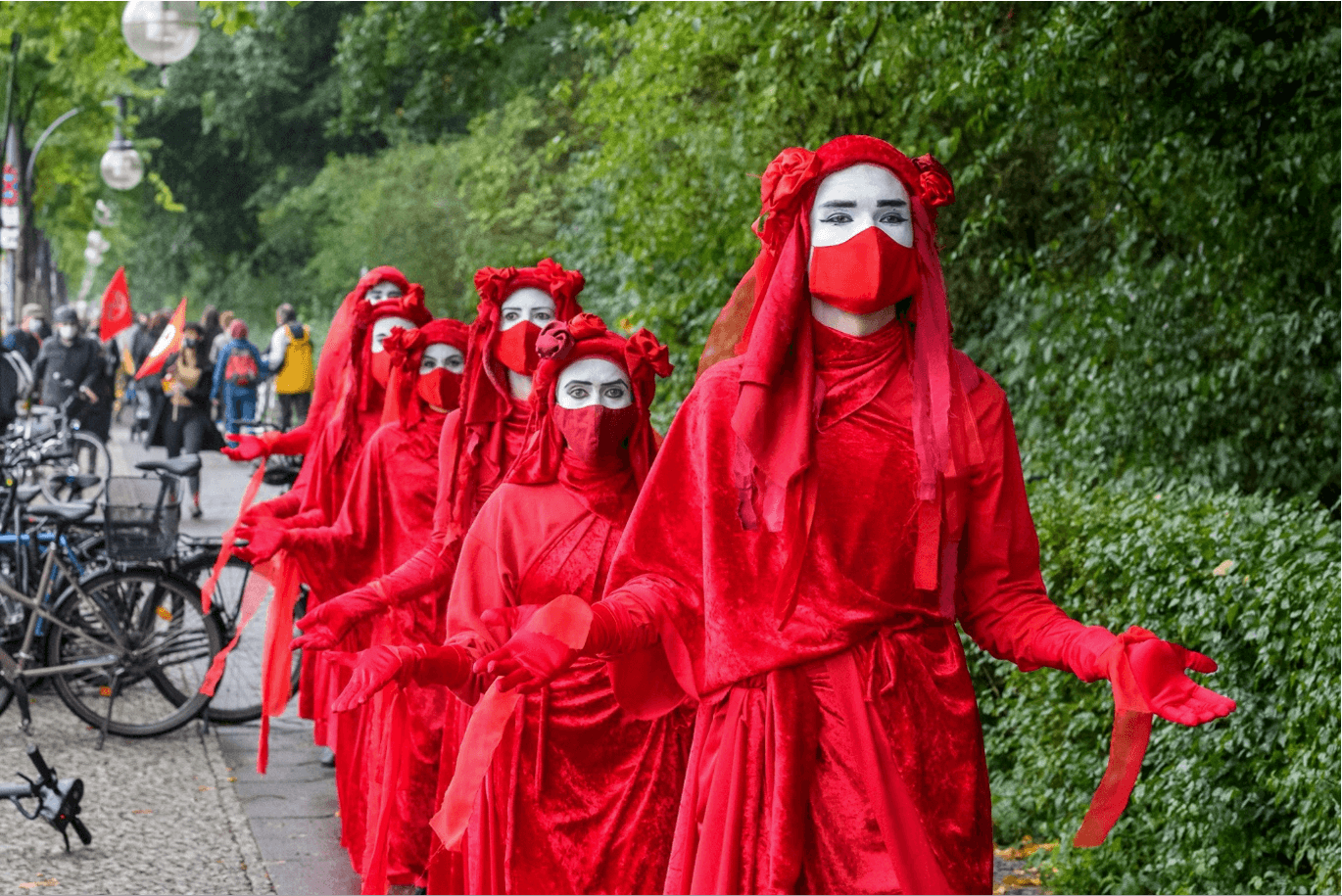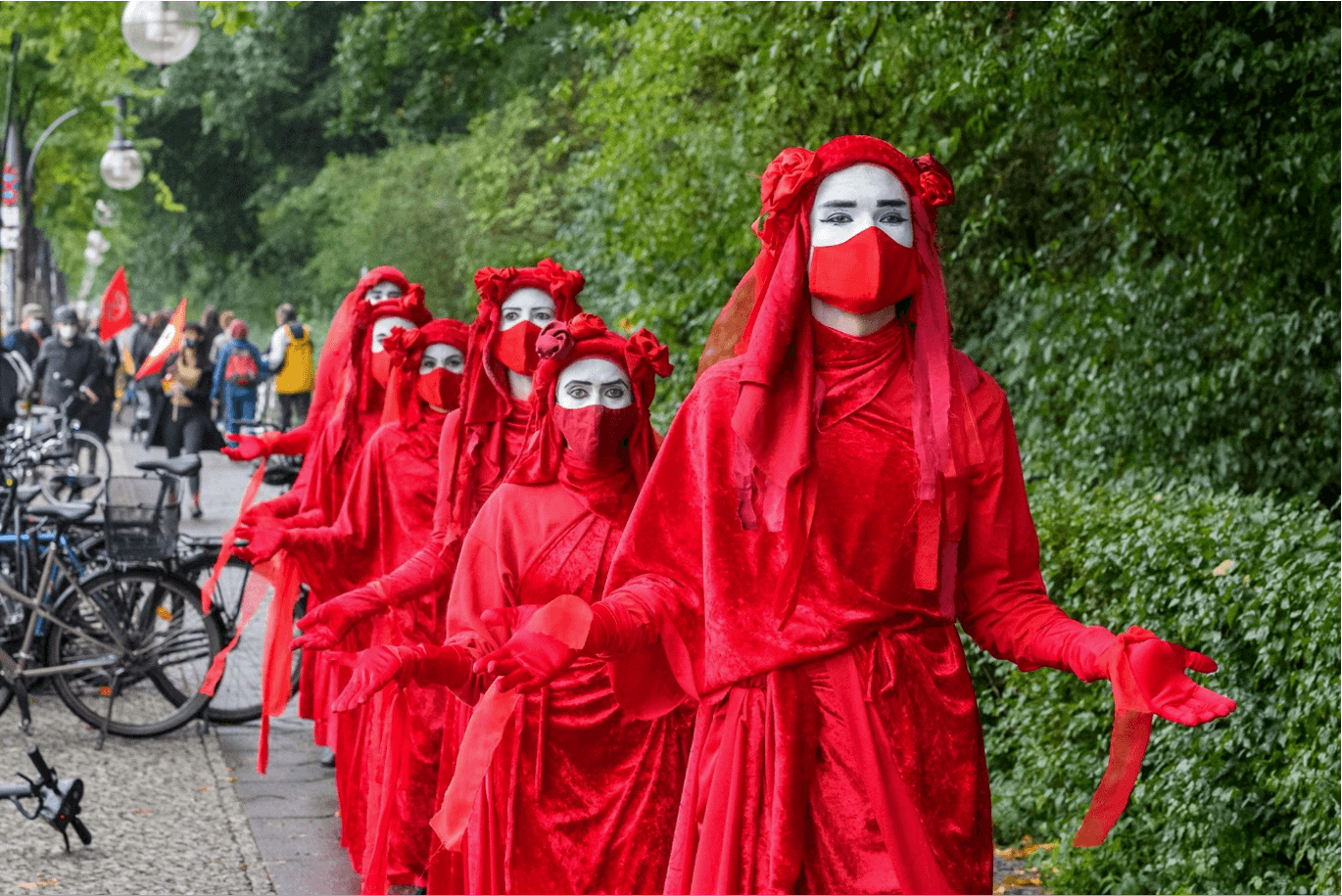PraktiBlog: The significance of the arts within the climate movement

Dear Aktivisti*,
As we want to make all voices heard, we will share blog posts written by our interns now and then. Since the young climate justice scene in Berlin has become very diverse, our interns decided to publish these texts in English so that everyone can read them. Please enjoy this excursion into the climate art scene by Jean Jepan who interns with us in the Communication team.
The significance of the arts within the climate movement
“If you hear a voice within you say, ‘you cannot paint,' then by all means paint, and that voice will be silenced.” – Vincent van Gogh.
Let me take you on a journey of your own mind, experience and emotions. As this blog article is published for Klimaliste Berlin, we will be facing some tough truths throughout this journey. Yet it lies within your power to choose how to approach these potentially overwhelming certainties. In the end we will gain new perspectives on the role of art in this world as well as about our own, as artists. You are one too - an artist of life.

Imagine a tranquil place - maybe the beach you visited a few years ago - a beautiful forest you hiked through last summer, or a nice village/city that you have come across, where you felt at total peace. Imagine yourself back at that place and that moment. Feel the wind tickling your skin, sunshine caressing your body, fresh air filling your lungs, lifting you up. What do all those sensations have in common?
They remind us of the intricate simplicity of being. Despite all the rush, despite the troubles and worries we carry, there is this basic feeling of empathy for solely Being (as Heidegger reformulated it with a capital letter). For a lot of people this feeling is connected to nature. Others experience it within huge crowds at festivals or inside their small home with loved ones. It all comes down to one thing: Our appreciation for our biological existence and well-being.
Artists are often seen in the role to mirror issues in a society and inspire people, in hope that appropriate action will be taken. If not for that, every piece is ferociously driven by an internal emotional struggle, which is provoked by external events. Most of the time, this is connected to more deeply rooted issues. Take for example Doug Francisco who invented the Rebel Brigade. A non-violent street theatre protest within the climate justice movement.
Completely dressed in red robes - embodying the blood of all living beings on earth - faces painted white, facing forward - fixed on eternity: The red rebels carry out their message of the urgency of action against global heating and other crises that will come with.

Having participated in this form of protest, I can say it feels very overwhelming. The way people look at you, while you are not allowed to break character, is the most curious part. Some bystanders are afraid, confused, others get angry very quickly, while some scream at you, call you names, evidently disgusted. From a psychologist’s perspective, these reactions are probably just different manifestations of the fear an individual is processing, resulting in this kind of aggressive rejection. Fear that charges through our bodies, while we just walk on.
Many artists advocate for climate justice and mentioning them all would go beyond the scope of this article. There even is a Wikipedia entry on climate change art, which is described as such: “art inspired by climate change and global warming, generally intended to overcome humans' hardwired tendency to value personal experience over data and to disengage from data-based representations by making the data "vivid and accessible". The intention is to "make an emotional connection through the power of art".”
For those who are interested, you will find some links down below that address the climate crises in various creative dimensions.
Now let us go back to your tranquil place, where something must have happened during our brief excursion. All the peace of nature has suddenly disappeared. Deforestation might have taken away this beautiful place of yours, so you find yourself within a dead empty landscape. That wonderful beach you were strolling around on might have vanished, due to rising sea levels. Maybe it has been contaminated by an oil spill. How do you feel? Try looking around, trunks of hundreds of trees chopped away without any possibility for refuge for remaining animals. Envision seeing those birds at the beach suffering their last breath submerged in an oily darkness. Feel the helplessness of the community, people whose livelihoods depended on nature tourism.
Are you sad, lost, enraged, in despair? Whatever might be going through your mind, embrace the discomfort, let it in, use it as a fuel for action!
In conclusion, an alternative version of the quote by Van Gogh from the beginning of this post: “If a voice within you says, you cannot do anything against the climate crisis, then by all means take action, and that voice will be silenced!”
If you don’t know where to start, have a look at these groups - there’s something for everyone:
Artistic intervention:: extinctionrebellion.de/og/berlin/
Disruptive action: eg-berlin.org/
Social participation: klimaneustart.berlin/
Political engagement: klimaliste-berlin.de/mitmachen
Great climate art projects to check out:
https://mymodernmet.com/anya-anti-2-5-seconds-photography/
https://www.artsy.net/article/artsy-editorial-10-artists-making-urgent-work-environment
https://www.researchgate.net/publication/228268551_A_Rough_Guide_to_Environmental_Art